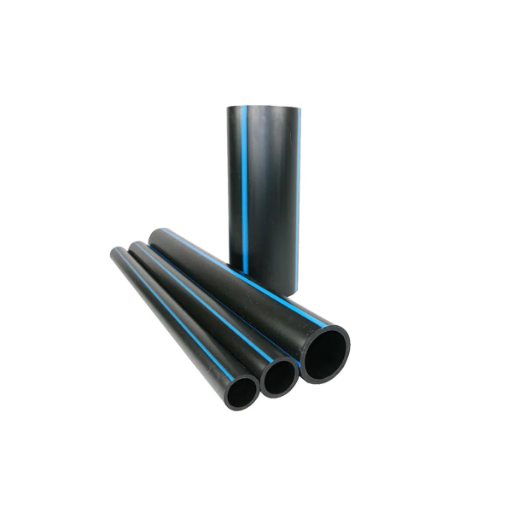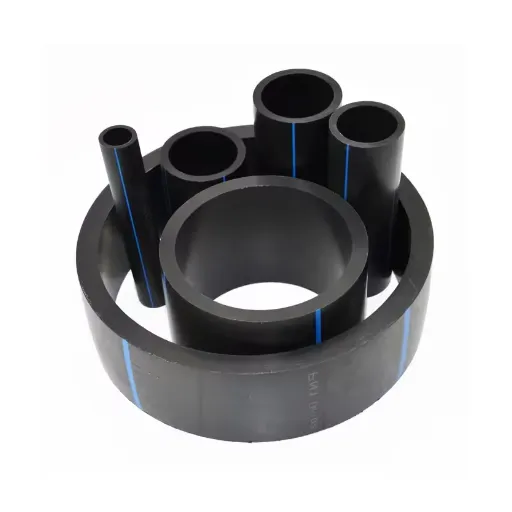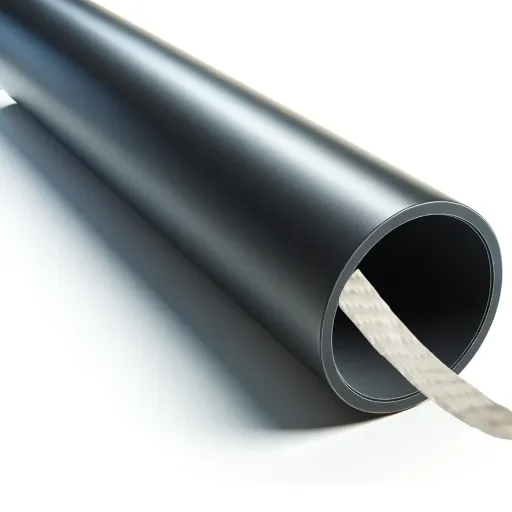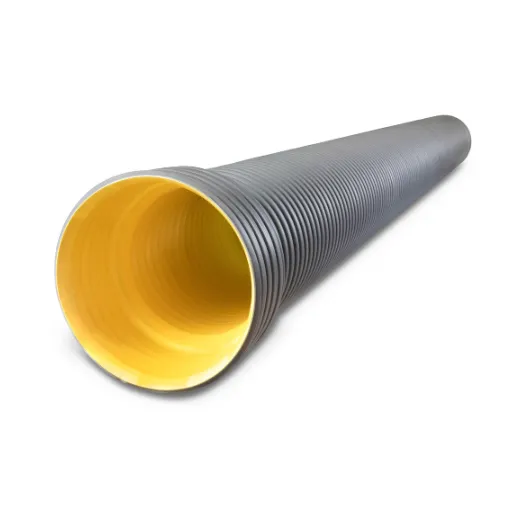High-Density Polyethylene (HDPE) pipes have revolutionized modern piping systems by offering unmatched durability, flexibility, and efficiency. Among the various specifications, the 16 HDPE pipe stands out as a widely used option for industrial, agricultural, and municipal applications. But what exactly makes it so versatile? This article dives deep into understanding the size, diameter, and specifications of 16 HDPE pipes, providing you with essential insights to make informed decisions. Whether you’re looking to optimize a fluid transport system or weigh its advantages over other materials, this guide will equip you with the critical technical knowledge needed to evaluate its performance and suitability for your project needs.
What is a 16 HDPE Pipe?

Characteristics of HDPE Pipe
HDPE (high-density polyethylene) pipes have an outstanding flexibility and resistance to certain physical and environmental factors, and their flexibility makes them very strong and enables them to withstand rot and corrosion. Furthermore, HDPE pipes can endure a wide range of temperature changes, provide strength while still being lightweight, resist compressive forces, and repel chemicals. Because of these pipes being so strong and durable, they can be utilized in pipelines for the distribution of water, gas, and other industrial liquids.
Along with other uses, one of the most important ones is their ability to withstand extreme temperature changes, enabling use in different climates without them being exposed to the risk of damage. Alongside this, these, with proper caution, enable water, gas, and chemicals to be distributed without worry of pressure, UV radiation, and scratches, enabling long-term reliability. Not only are they adaptable without risking cracks or breaks, making them perfect for science-prone areas, but their high-density polyethylene (HDPE) has a smooth inner surface, minimizing friction on fluids, aiding in the enhancement of efficiency, and increasing restriction.
They follow international guidelines like ASTM D3035 and ISO 4427 when it comes to their production – this guarantees consistency and quality. Compared to conventional options like PVC or steel, HDPE pipes usually surpass them regarding durability, cost, and simplicity of setup due to their lightweight and fusable joints. For projects needing strong yet green materials, HDPE is unmatched, which is why it is preferred when designing modern infrastructure.
Applications of 16 HDPE Pipes
The 16 HDPE pipes have become a critical component in numerous industries thanks to their unmatched adaptability. Water distribution systems are one of the foremost areas of their application where their ability to endure corrosion, chemical attack, and sediment accumulation is deeply valued. Due to their strength, HDPE pipes are also utilized in both municipal and rural water supply distribution networks, which require a definitive solution for pressure and temperature fluctuations.
Moreover, these pipes serve as an efficient, leak-proof tool for helping farmers manage large-scale agricultural irrigation projects. The lightweight of the pipes makes them easy to transport and speeds up installation, all of which significantly reduces project timelines.
16 HDPE also finds application in the transportation of industrial fluids and gas. The pipes’ ability to endure high pressure while remaining flexible makes them reliable for transporting chemicals, slurries, and even compressed gases in extreme external environments. Their application in mining operations is essential due to the need for handling abrasive materials.
The recyclability of 16 HDPE pipes makes them incredibly popular in modern sustainable sewage and drainage systems. Urban planners and engineers utilize them for stormwater collection since they effectively seal off any leaks to minimize contamination of the environment.
Due to ongoing improvements in HDPE materials, the use of these pipes is growing, confirming their importance in developing effective, environmentally friendly, and durable infrastructure solutions.
Benefits of Using Polyethylene Pipe
Numerous well-documented advantages of high-density polyethylene (HDPE) pipes make them the preferred choice for a wide variety of applications. One of their most notable benefits is their remarkable strength and resistance to environmental conditions. The probability of corrosion occurring on HDPE pipes is exceptionally low, and therefore, they can be used in harsh chemical applications and soil that is either alkaline or saline. Unlike conventional materials, HDPE pipes will not rust, decay, or suffer damage due to prolonged moisture exposure.
Another critical advantage is their lightweight and flexible nature. These properties combined make ease of transportation, handling, and installation remarkably less complicated, leading to a reduction in project cost. Polyethylene pipes can bear the movement or pressure changes of the soil, a crucial factor in unstable or earthquake-prone regions.
Moreover, hydraulic efficiency is another category where these types of pipes surpass the competition. The smooth surface on the inside of the material results in reduced friction and therefore higher flow rates relative to pipes made of other materials and with the same diameter. This not only increases the performance of the system but also reduces energy expenditure in pumping applications, lowering operational costs.
HDPE pipes have their customary environmental sustainability parameters. Unlike many alternatives, they are fully recyclable, and their carbon footprint during production is lower. Their leak-proof joint systems cut back water loss, contamination, and waste while aligning with global sustainability goals.
In the modernized world, manufacturing processes have further enhanced the versatility of polyethylene pipes. Modern high-performance HDPE variants offer better UV protection alongside a lifespan exceeding 50 years under normal operational conditions. These developments increase the importance of HDPE pipes in the construction of long-lasting, effective, and advanced infrastructure systems.
How to Choose the Right Size for Your Project?

Interpreting the HDPE Pipe Size Chart
DN pertains to the nominal size of a pipe, which is almost always given in mm. Hence, DN gives an estimate of the size of the pipe, disregarding the wall thickness. On the contrary, SDR shows the degree of the outer diameter of the pipe about its wall thickness. This ratio has a direct effect on the pressure rating or strength of the pipe while in operational state.
A pipe with a lower SDR value. The wall will be thicker than the diameter of the pipe, thus it will have a higher pressure resistance. However, thinner walls and reduced pressure capacity would mean higher SDR values. Both of these indicators will make the pipe compatible with specific applications. Pipes with lower SDR values are needed for extreme water pressure systems or certain industrial purposes. Non-pressurized applications, on the other hand, can use pipes with higher SDR ratios.
Looking at regional standards and production tolerances, consulting the manufacturer’s product specifications is also important. Incorporating these changes alongside the project requirements would guarantee the best results in terms of efficiency, performance, and cost.
Factors Influencing Pipe Size Selection
Choosing the right pipe size affects its configuration and is critical when looking at application-specific criteria. Looking at the flow rate is fundamental, as a given flow rate has an internal diameter to maintain specific pressure losses during fluid or gas transport. Compatibility is another broad scope, as the chemical and physical boundaries of the temperature and pressure, along with any potential corrosive elements, determine the pipe material.
Another aspect is industry compliance alongside regulations, which detail limits, measurements, and other specifics for an application. The integrity that the pipe holds, mostly governed by its SDR value or wall thickness, needs to be compatible with the strain forces in the form of mechanical stresses during operational phases. Also, the price of materials, costs associated with installation, and maintenance are significant factors in the overall system configuration.
The use of new computational modelling, as well as software tools, enables the simulation of fluid movement within pipes to aid size selection with real data. Merging those techniques with precise project data and appropriate discussions with the manufacturer allows experts to enhance pipe system specifications while sustaining required performance, safety, and cost efficiency.
What Are the Specifications of a 16 HDPE Pipe?

Material and Pressure Ratings
Applications such as construction and farming use High-Density Polyethylene (HDPE) pipes due to their resistance to damage and changes in temperature. This is made possible by the raw material used to manufacture the pipes, which is HDPE. The strength of a material compared to other materials with relatively similar weights determines the quality of the pipe, which in turn makes it resistant to cracking, corroding, or any chemical deformation of the pipe itself. This is an indication of good performance in the aspects of its density, the ability to slowly crack under stress, and withstand pressure, such as demand is indiscriminate waterworks purposes, industrial use, and agricultural applications.
The pressure ratings of a 16-inch HDPE pipe differ according to the wall thickness, which is categorized using the Standard Dimension Ratio (SDR). Common SDR classifications for such pipes include SDR 11, SDR 17, and SDR 21. For instance, SDR 11-rated HDPE pipes can withstand higher pressures, typically up to 200 psi at 73°F, while SDR 17 pipes are rated for lower pressures of roughly 125 psi under the same conditions. Also, the pressure capacity changes with temperature; HDPE pipes undergo thermal de-rating, meaning higher temperatures result in lowered pressure handling capacity. Operational failure due to variable factors such as temperature and pressure is one of the severe consequences; thus, it is important to consider these alterations carefully.
The flexibility offered by HDPE pipes allows for a greater degree of thermal expansion and contraction during their use without causing failure. Also, material properties alongside the SDR classification and pressure rating significantly impact the accuracy to meet for system design.
Standard Length and Diameter
The manufacturing of High-Density Polyethylene (HDPE) pipes is done with set lengths and diameters depending on the purpose. Joints and fittings needed during installation are minimized as HDPE pipes are produced in straight lengths of 6m, 12m, or coiled. Coils of 50 to 500m length are used depending on the transport restrictions and diameter of the pipe.
Following these regulations ensures consistency across regions. Set limits vary from 20 mm for low capacity pipes to 2000 mm for large infrastructural projects where water supply and sewerage systems are installed. Engineers can decide the size of parts based on the flow and operational demands, as the nominal diameter corresponds directly with the SDR (Standard Dimension Ratio) and pressure rating of the pipe.
By having the right combination of diameter and length with consideration for the temperature, the life cycle of the pipeline is increased.
How Does PE4710 Differ from Other HDPE Products?
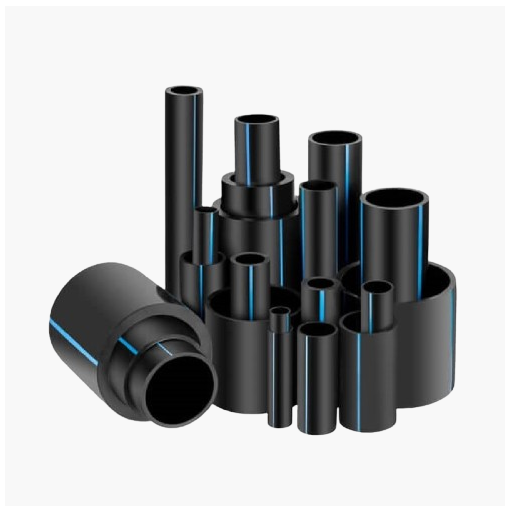
Advantages of PE4710 Material
PE4710 has several advantages over other HDPE materials, which make it a preferable option for contemporary pipeline installations. One of the benefits is the enhanced performance properties, including a higher hydrostatic design basis (HDB) at 73°F (23°C), which performance PE4710 pipes are capable of withstanding greater pressure ratings for thinner walls, thus improving material economy and cost savings.
Considering the other advantages, PE4710 has superior resistance to slow crack growth (SCG) and rapid crack propagation (RCP), therefore providing longer service life and greater durability for demanding tasks like gas distribution and water mains. Besides that, PE4710 has higher resistance to environmental stress cracking, which allows it to perform in very harsh operating conditions.
The material’s high density and molecular weight provide better creep resistance, which reduces deformation over time. This is especially important in systems that need to function for decades without failing. In addition, PE4710 is applicable for trenchless technologies like horizontal directional drilling and pipe bursting, which help reduce maintenance and installation interruptions.
Considering sustainability, PE4710 has a lower carbon footprint because it requires less material than older HDPE grades for the same level of performance. Additionally, the material can be recycled and repurposed at the end of its life, which is by current environmental standards. All together, these benefits make PE4710 an industry standard for safe, efficient, and sustainable pipeline infrastructure.
Comparison with Ductile Iron and Traditional Pipes
PE4710, in comparison to other traditional materials such as ductile iron, shows greater durability, performance, and even environmental impact. Another distinguishing factor of PE4710 is its corrosion resistance. Ductile Iron pipes can be strong, but have a recurring issue with internal and external corrosion over time. This forces the pipes to use protective linings and coatings to extend their life. Contrarily, PE4710 pipes are made of nonmetallic thermoplastic materials that can naturally resist water, chemicals, and aggressive soil conditions. This increases the lifespan of the pipes and decreases the operational costs incurred due to high maintenance issues.
Another aspect where PE4710 outperforms its counterparts is performance under pressure. Fluctuating internal pressure testing is easily withstood by PE4710 due to its high tensile strength and ductility. It is highly resistant to failure due to mechanical stress or external forces, like ground movement or heavy surface loads. Ductile iron pipes also face these issues, but are prone to brittle failure in warmer temperatures. Ductile pipes also face extreme pressure changes, which lead to failure in colder environments.
Considering sustainability aspects, modern advancements regarding environmental issues are further complemented concerning PE4710. Ductile iron is recyclable; however, its high energy-consuming production process, alongside its heavier weight, results in increased carbon emissions relative to manufacturing and transportation. In contrast, PE4710 is lightweight and therefore requires much less energy for installation and transportation, further providing ease during the recycling process at the end of its life cycle.
Moreover, PE4710 enables advanced installation techniques like trenchless technologies that offer lesser surface disturbance in comparison to ductile iron as well as minimized installation duration when compared with other traditional pipes. These characteristics render PE4710 economically advantageous and functionally useful while outperforming traditional pipes in terms of enduring environmental impact as well as sustainability throughout various applications.
What Are the Installation Methods for 16 HDPE Pipe?
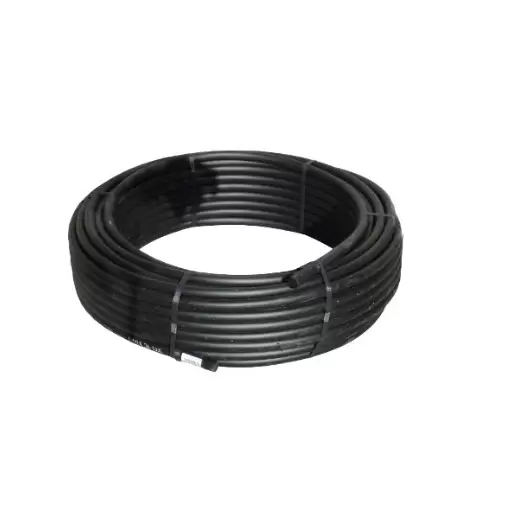
Butt Fusion and Connection Techniques
The premier technique for connecting pipes of 16 HDPE is butt fusion due to its ease of achieving a leak-proof joint. The method utilizes a scrapper that cleans the ends of the pipes, applies heat to them using a thermometer calibrated at a fusion temperature, and subsequently pushes the ends under consistent pressure until they meld together. The fused section allows for the joint to form without loss of structural integrity. The determination of strength in butt fusion is achieved by measuring control of temperature, alignment, and pressure during welding, which is governed by applicable standards such as ASTM F2620 and ISO 21307.
Electro-fusion adds to the connection alternatives where opposing unique pipes and odd angles exist that would be difficult to manipulate using butt fusion machinery. In electro-fusion, a fitting that contains resistive wire coils is used; when electricity is applied to them, they melt the edges of the pipes, creating a sturdy bond. Both methods have stringent requirements for procedure detail, such as cleaning surfaces, alignments, and preparations; disregarding any instructions could lead to disintegration of the junction over time. Various studies and field applications confirm that these methods surpass traditional mechanical jointing options in terms of durability, pressure rating, and resistance to environmental and chemical stress.
Strictly observing the methods of joining these connections permits achieving peak efficiency and increases the longevity of the 16 HDPE piping system, regardless of the application.
Using HDPE Pipe in Irrigation and Water Systems
Due to its flexibility, chemical resistance, and environmental stress tolerance, HDPE (High-Density Polyethylene) pipe is gaining traction for modern irrigation systems as it is extremely durable. Its non-corrosive nature makes it ideal for transporting water in areas with diverse soil composition or high saline content, guaranteeing long-term dependability. Moreover, it can withstand dripping and high-pressure systems, making it applicable for both agriculture and municipalities.
- Exceptional Durability: The materials used and the production optimization of the HDPE pipes allow it to withstand pressure surges and temperature extremes. These characteristics slow down system degradation, reducing the likelihood of mechanical failure.
- Lower Maintenance Needs: Anti-corrosive material and smooth inner surfaces result in lowering the chances of clogging or material buildup, maximizing operational HDPE pipe efficiency, and delaying required maintenance.
- Simplicity of Installation: Creating joints through butt or electrofusion fusion welding can enhance joint strength and seal leakage paths thus augmenting the entire system strength.
HDPE systems offer advanced flow and resource efficiency, lowering water wastage to improve operational effectiveness. These traits highlight the importance of HDPE systems in managing water resources and adopting strategies for sustainable water management.
Common Challenges and Solutions in Pipe Installation
Pipe installations as crucial components of infrastructural and resource systems management face numerous intricate problems that, if not solved, could affect the efficiency of the system in the long run. The pipe installation challenges faced are listed below, along with their ideal solutions:
- Soil Erosion: Natural phenomena, for example, soil erosion, seismic activities, and temperature fluctuation, pose a risk to the pipeline’s structural integrity. Engineers can use materials such as HDPE pipes that are flexible enough to endure strain and ground movement without rupturing. Moreover, comprehensive geotechnical surveys must take place as a precursor install measure to assess soil stability and inform augments structural supports.
- Pipe leakage and Joint Failures: A primary contributor to water loss in pipeline systems is joint failures owing to leakages. Employing fusion welding techniques for HDPE pipes, including butt fusion and electrofusion, captures the join without allowing them to leak. Regular non-destructive testing (NDT) will expose the weak joints of bent pipes, which, if not checked early, increase fresh water irretrievably damage fresh water candidio savers and lead to a shortening of their lifespan.
- Corrosion and Material Degradation: The corrosion of metal pipes increases with the presence of moisture and soil pH levels. Newer installations of pipes include materials like HDPE and PVC, which are inert and have longer lifespans compared to other plastics. Where metal materials must be used, protective coatings should be applied, and cathodic protection systems should be employed.
- Hydraulic Capacity and Flow Optimization: Inefficient hydraulic designs directly lead to increased pressure loss and reduced loose-water delivery service efficiency. Optimization of secondary systems from primary hydraulic motors can be achieved through advanced modeling software, flow simulation tools, and aspiration through maximal life hydraulic efficiency. Moreover, installing flow control devices during construction enables metering for real-time data adjustments to enhance operations.
- Temperature Variability: There is a need to address the phenomenon of uncontrolled heating extremes for a longer period, as this may lead to expansion or contraction of pipes, which may cause stress fractures. Joint expansion accompanies the construction of flexible pipe, which allows unrestricted movement resulting from thermal load during local weather changes. Material selection also requires prioritization on thermal strength dictated by the region’s climatic environment.
Anticipating these outlined challenges allows utility networks to proactively improve system efficiency, reduce maintenance, and improve operational longevity. The success of pipeline installations is still heavily reliant upon the incorporation of modern technology and industry best practices.
References
Frequently Asked Questions (FAQs)
Q: What is a 16 HDPE pipe?
A: A 16 HDPE pipe refers to a high-density polyethylene pipe with a nominal diameter of 16 inches, used for various applications, including water supply and sewage systems.
Q: What are the specifications of a 16 HDPE pipe?
A: The specifications for a 16 HDPE pipe include its size, wall thickness, pressure rating, and material grade. It is typically a black HDPE pressure pipe with varying SDR (Standard Dimension Ratio) values, such as SDR 11, to accommodate different pressure ratings.
Q: How is the diameter of a 16 HDPE pipe measured?
A: The diameter of a 16 HDPE pipe is measured using the IPS (Iron Pipe Size) standard, which provides a consistent method for measuring the outside diameter of the pipe.
Q: What is the significance of SDR 11 in 16 HDPE pipes?
A: SDR 11 indicates the ratio of the pipe diameter to its wall thickness, which affects the pressure rating. A lower SDR value, like 11, means the pipe has a thicker wall and can handle higher pressures.
Q: How long is a typical section of 16 HDPE pipe?
A: A typical section of 16 HDPE pipe is often 40 ft in length, which is a common industry standard for easy handling and transportation.
Q: What is the purpose of using black HDPE for these pipes?
A: Black HDPE is used for its UV-resistant properties, making it suitable for outdoor applications where exposure to sunlight is a concern. The black color helps protect the pipe from degradation.
Q: How is the allowable pressure for HDPE pipes determined?
A: The allowable pressure for HDPE pipes is determined by the pipe’s material, wall thickness, and SDR rating. This ensures the pipe can safely withstand the internal pressures during its intended use.
Q: What industries commonly use 16 HDPE pipes?
A: 16 HDPE pipes are commonly used in industries like water distribution, sewage systems, and industrial fluid handling. The pipe is used for its reliability and durability in transporting fluids under pressure.
Q: Are 16 HDPE pipes available in metric measurements?
A: Yes, while many 16 HDPE pipes are measured using the IPS system, they are also available in metric measurements to accommodate international standards and preferences.



